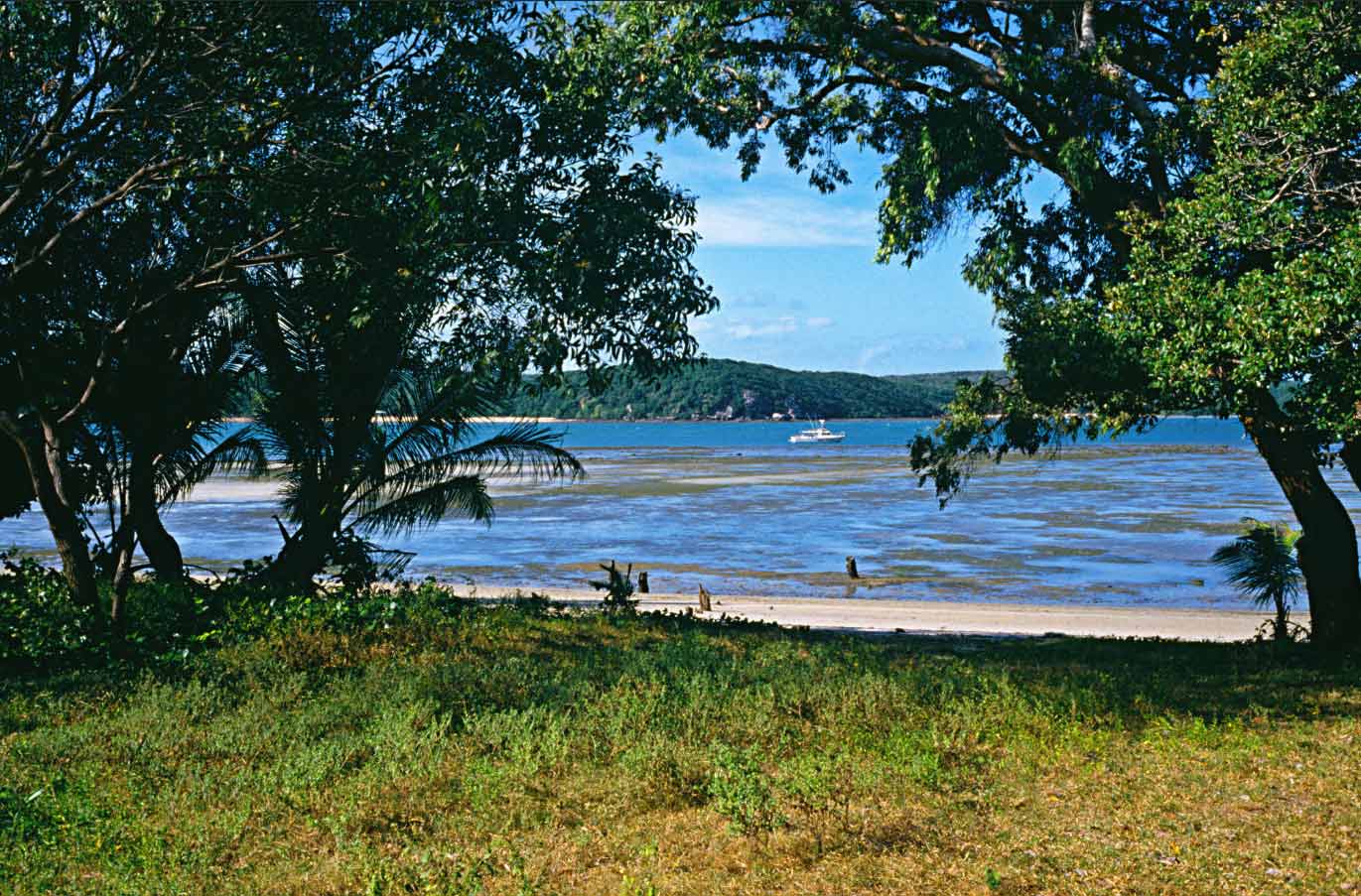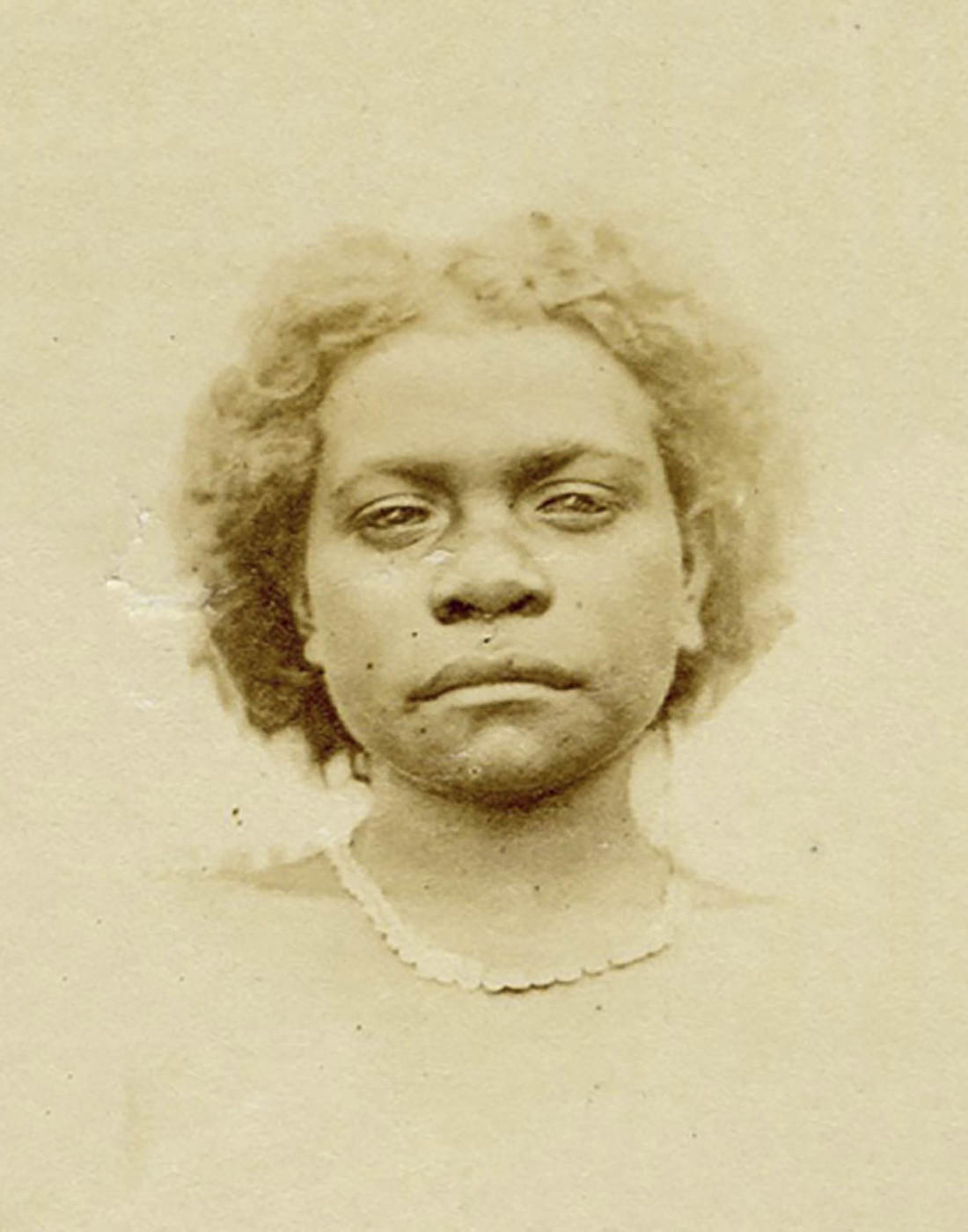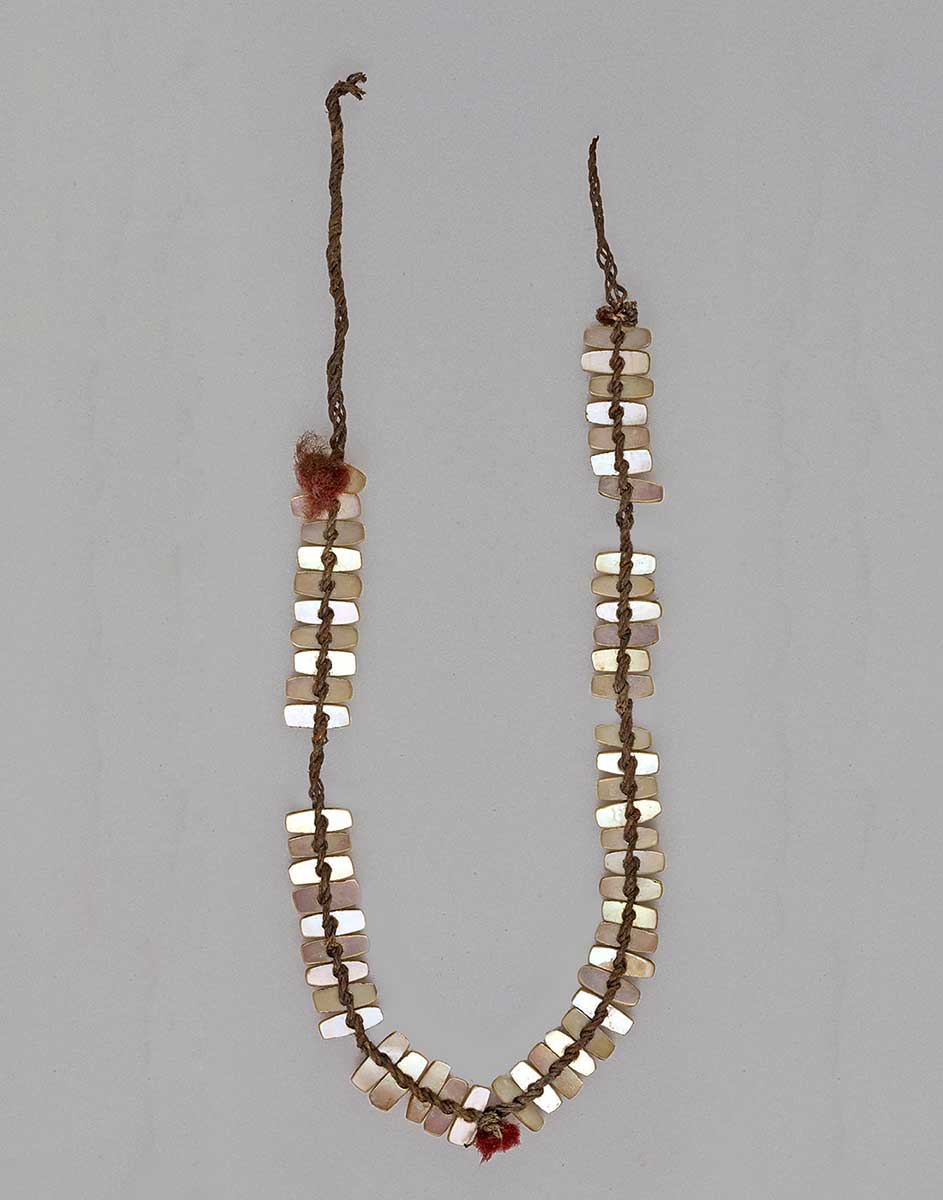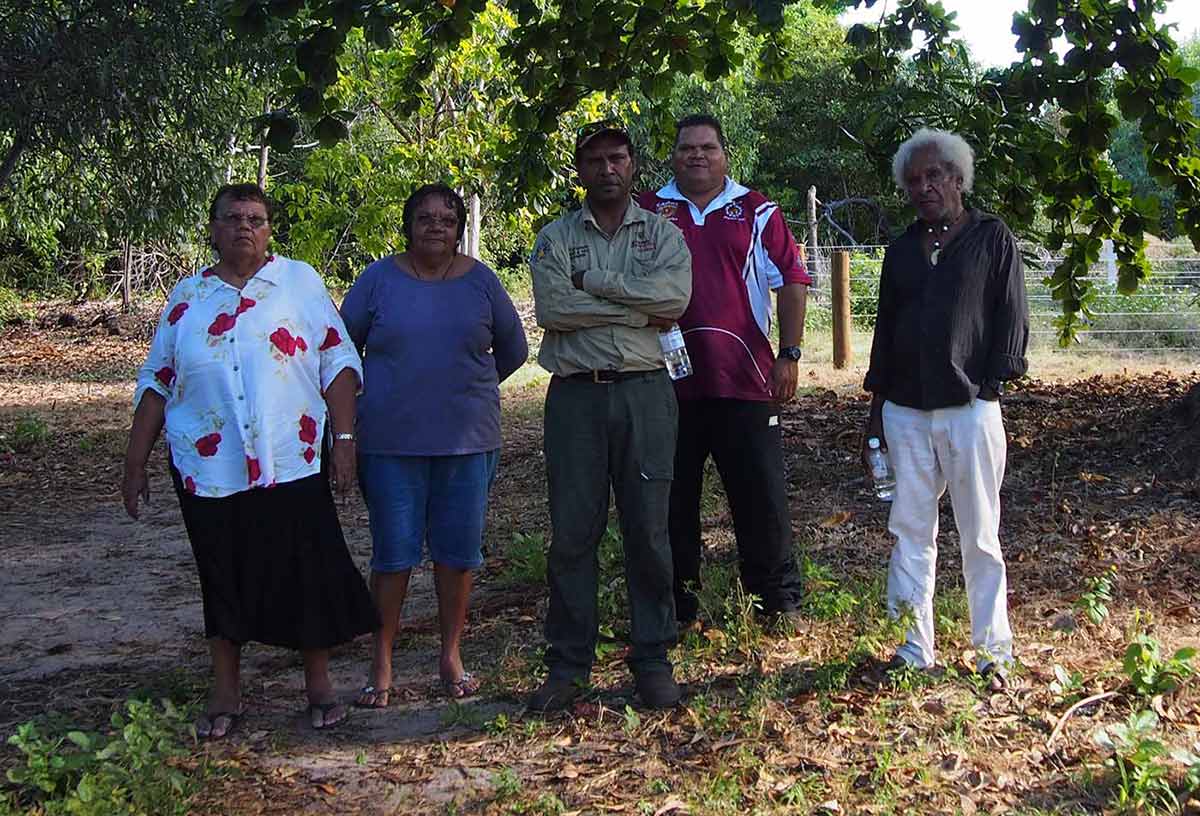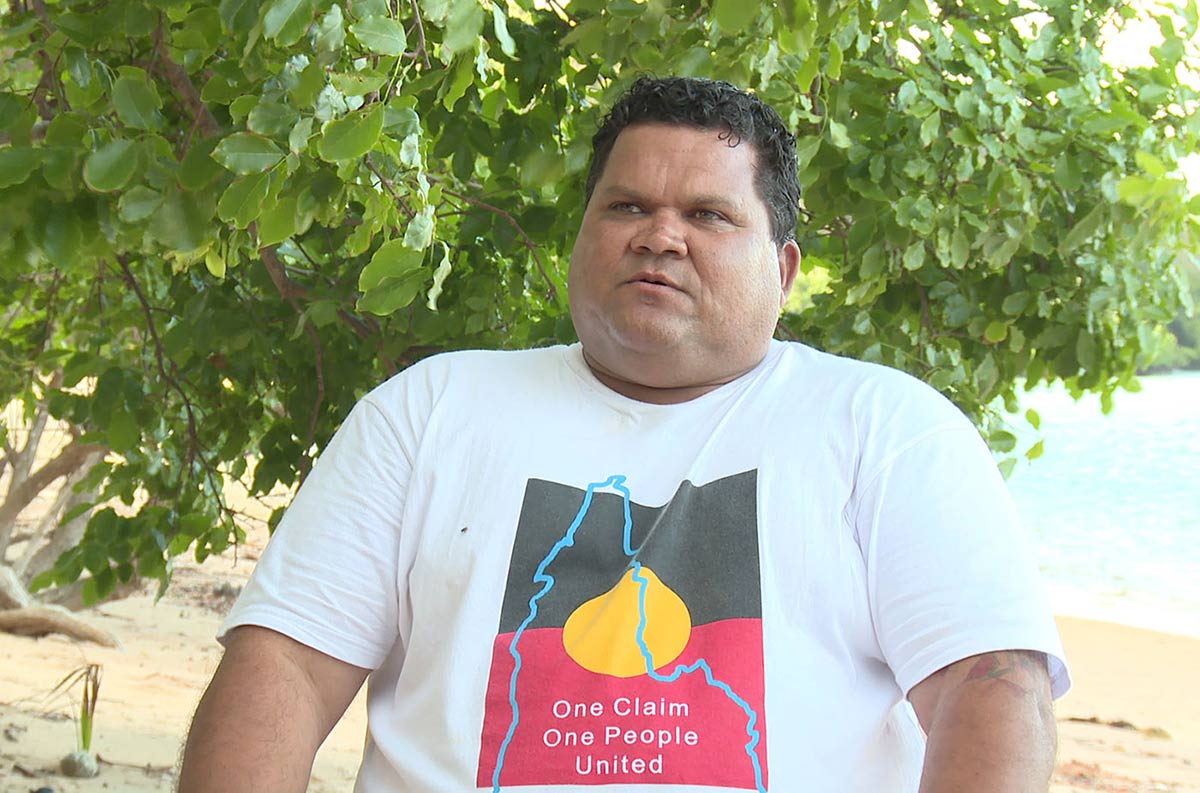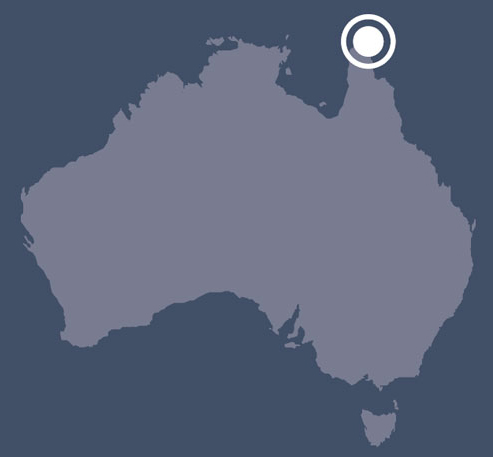
Gudang country
At the northern tip of Cape York, Gudang country attracted colonisers keen to settle near busy Torres Strait trade routes. Pastoralists and missionaries soon followed.
Explore the impact these encounters had on the Gudang people and their responses today.
Setting the scene
Nicholas Thompson, Gudang man, 2014:
For me as a young generation coming through, I can feel our youth … are very resilient to what our late ancestors have been through … It’s a sort of skill that us as the next generation coming through have learnt over the years — to be resilient.
Colonial authorities established Somerset on Gudang country in 1864. At the tip of Cape York Peninsula, it was planned to be a port and administrative centre for the Torres Strait region, but this remote colony became a violent place presided over by the infamous Jardine family. A missionary report noted that ‘Jardine ruled with a Terry rifle with 47 notches on its stock’.
William Kennett, an Englishman who was one of two staff at the short-lived ‘Society for the Propagation of the Gospel in Foreign Parts’ mission at Somerset, attempted to mediate the violence between the Aboriginal and Torres Strait Islander people and the colonists. He took great interest in local culture, collecting objects, taking photographs and learning the languages.
Despite Kennett’s work, people today only remember the ‘Jardine time’.
Aunty Maryann Mayor, Gudang elder, 2014:
It’s always beautiful here. Can’t live here though, that history too recent. Every time we visit, that history right there.
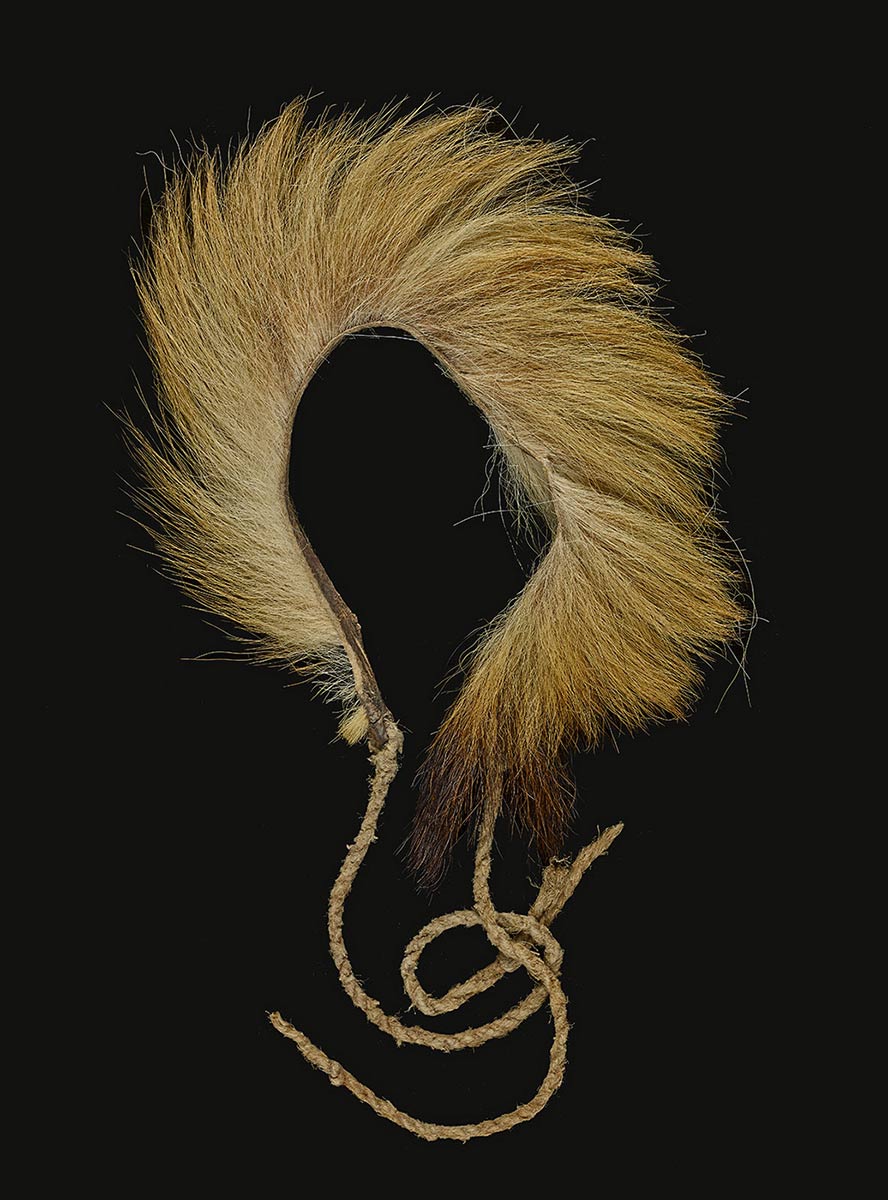
Dingo-tail headband
Uncle Meun ‘Shorty’ Lifu, Gudang elder, 2014:
Not so many dingos in this area anymore. This is interesting, I never would have thought they put a tail on their heads. Maybe [a] necklace?
William Kennett, letter to Augustus Wollaston Franks, 1870:
I collected [the objects] during a two years residence [1867–68] amongst the natives near Cape York. The collection is I believe complete, comprising every weapon, article of dress, or ornament etc. used or manufactured by those natives.
On his return to England, Kennett displayed these objects and photographs at the Manchester Missionary Exhibition of 1869–70. It was from here that Franks acquired material, including this headband, for the British Museum.
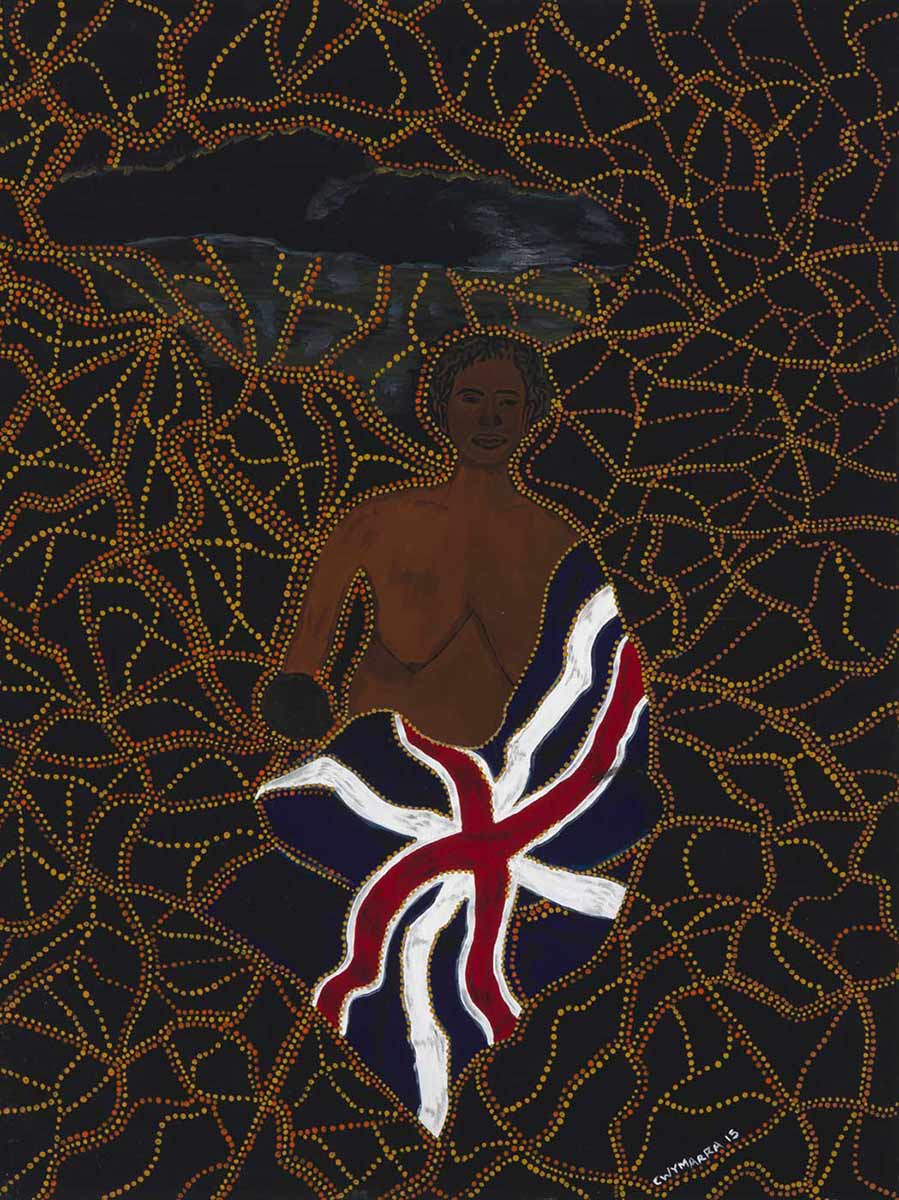
Eyes of Innocence
One hundred years before Jardine and Kennett were residents of Somerset, James Cook sailed around the tip of Cape York, ‘claiming’ the east coast of Australia by hoisting the British flag on Possession Island.
Colina Wymarra, Gudang woman, 2014:
The story that my dad told me is when Cook sailed through the Torres Strait he put a flag on Possession Island. The Gudang are seafaring people and they often travel to the island and saw the ‘cloth on a stick’ stuck in the sand on the beach.
In their innocence, my people’s innocence, they grabbed that and used it as a blanket and covering. ‘Flag’ was not a concept they knew of.
I painted the traditional Gudang woman as she covered herself and her baby in that cloth because they didn’t know what that cloth was or what it meant or [has] come to mean centuries later.
Video stories
Learn about the meaning of of objects
Watch this video where Gudang-Yadjaykenu traditional owner Nicholas Thompson-Wymarra talks about the history of Somerset and the meaning of objects.
Activity: Objects can carry different meanings, for different people at different times. Choose one of the objects from Gudang country shown above and examine what it might mean to:
- the person who made it
- the person who collected it
- someone seeing it in a museum
- a descendant of the person who made it.
How much do you know about Somerset?
More activities
Examine the images and text above, especially ‘Setting the scene’ and read this quote by Aunty Maryann Mayor, a Gudang elder, in 2014:
It’s always beautiful here. Can’t live here though, that history too recent. Every time we visit, that history right there.
What history is Aunty Maryann referring to, and why do you think it prevents people living in an otherwise beautiful place? Jot down words or phrases that come to mind. After a couple of minutes, share your perspectives, then work in pairs or small groups to identify common themes or surprising responses.
This activity has been drawn from the class ‘wraparound’ discussion outlined on the Facing History and Ourselves website.
Explore more on Community stories
